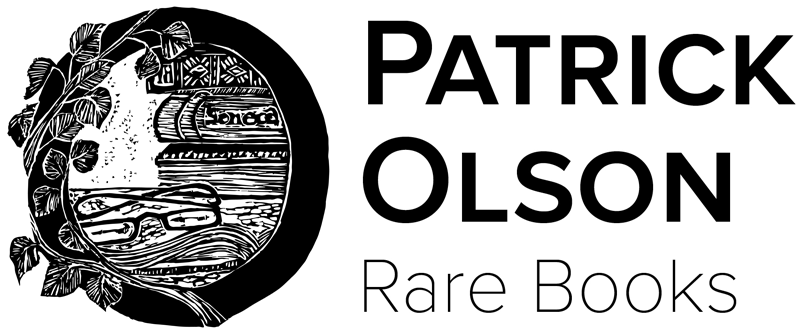Sponge-painted bindings
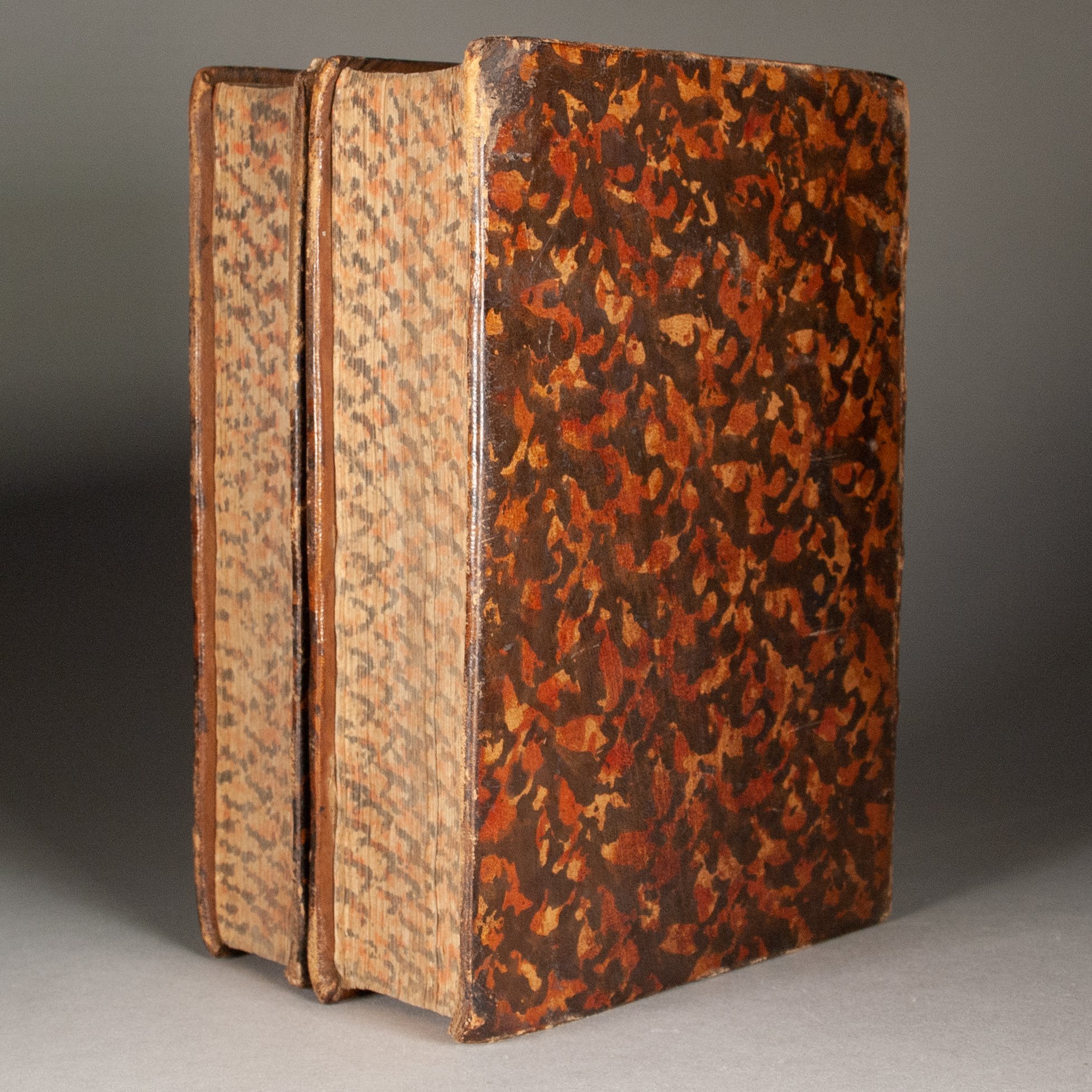
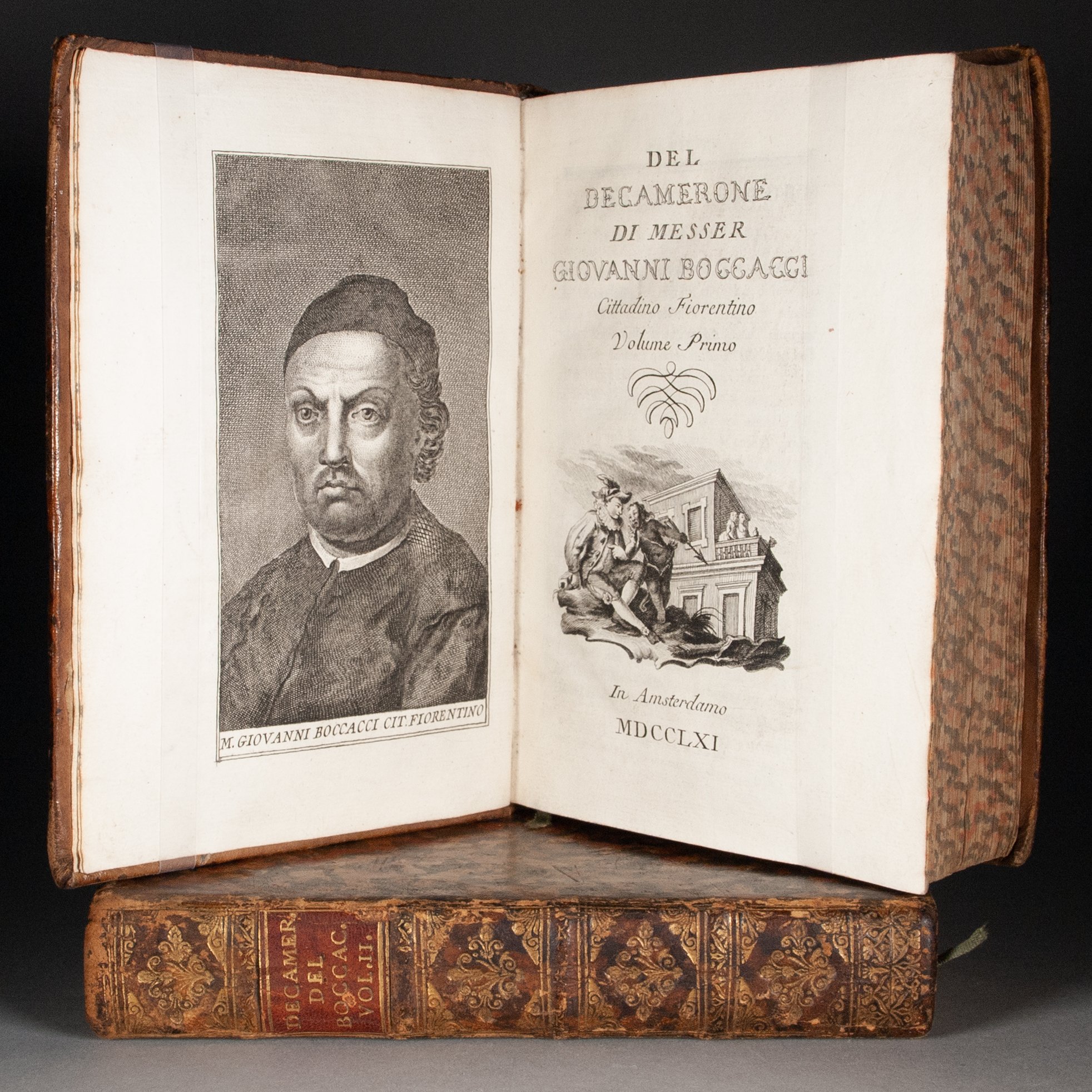
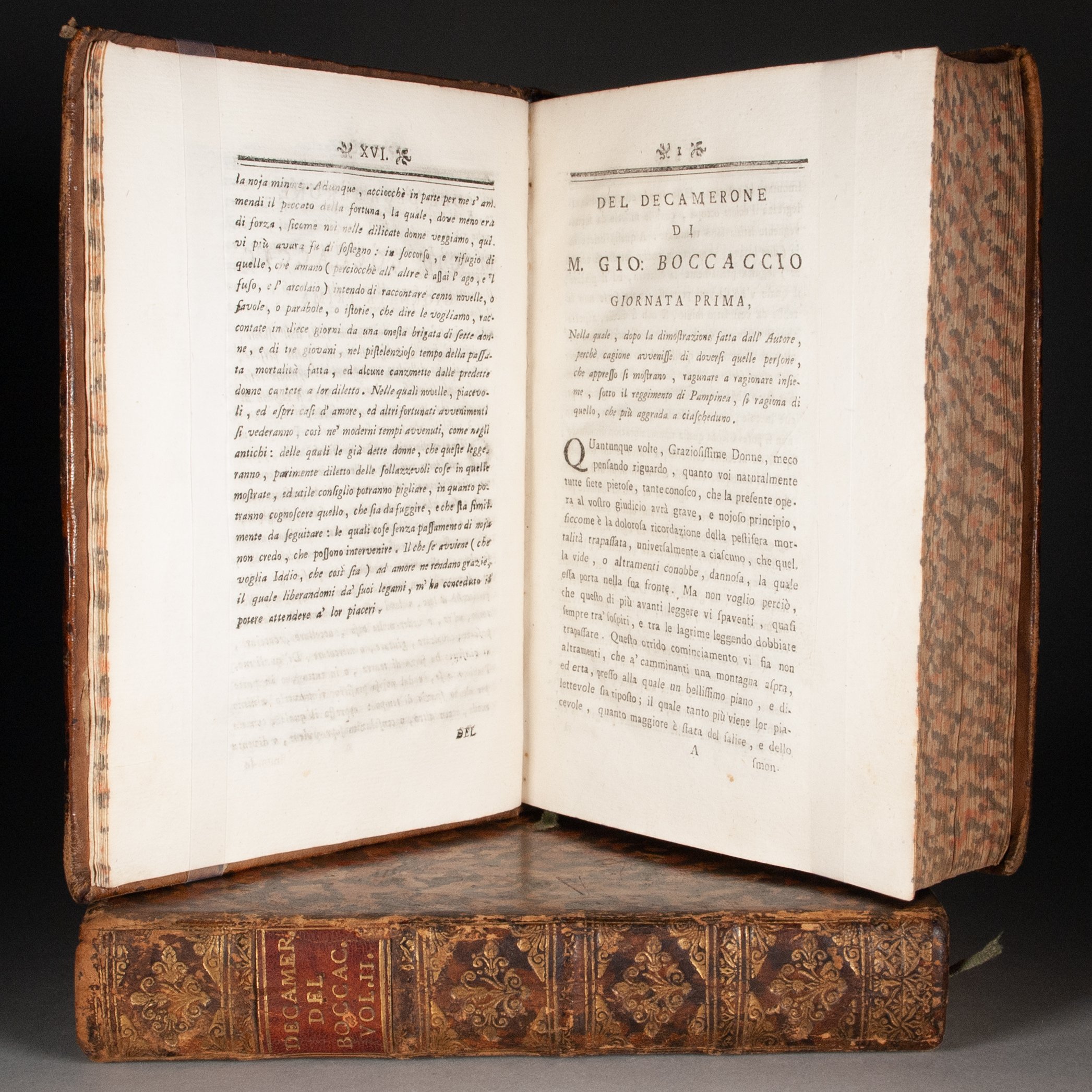
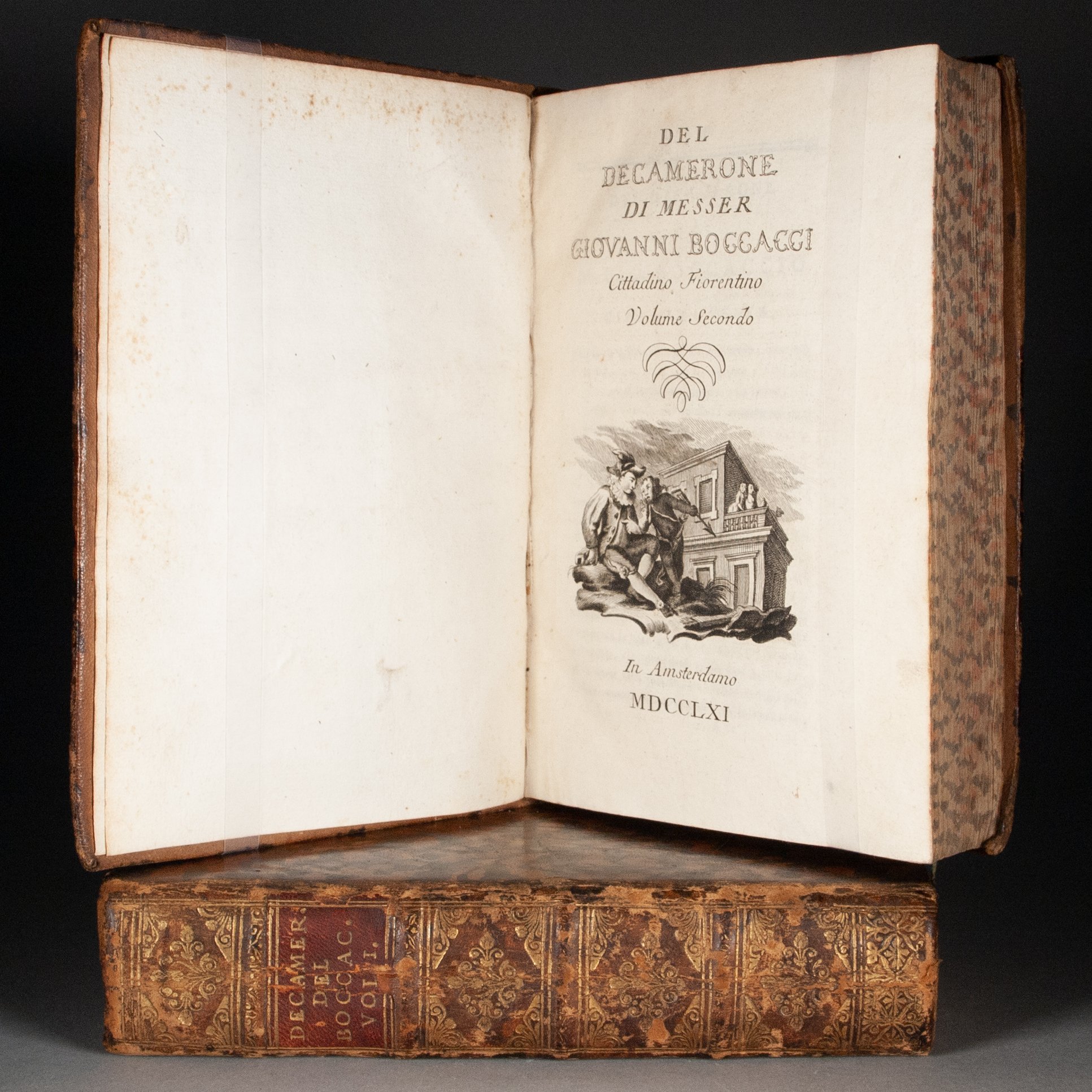
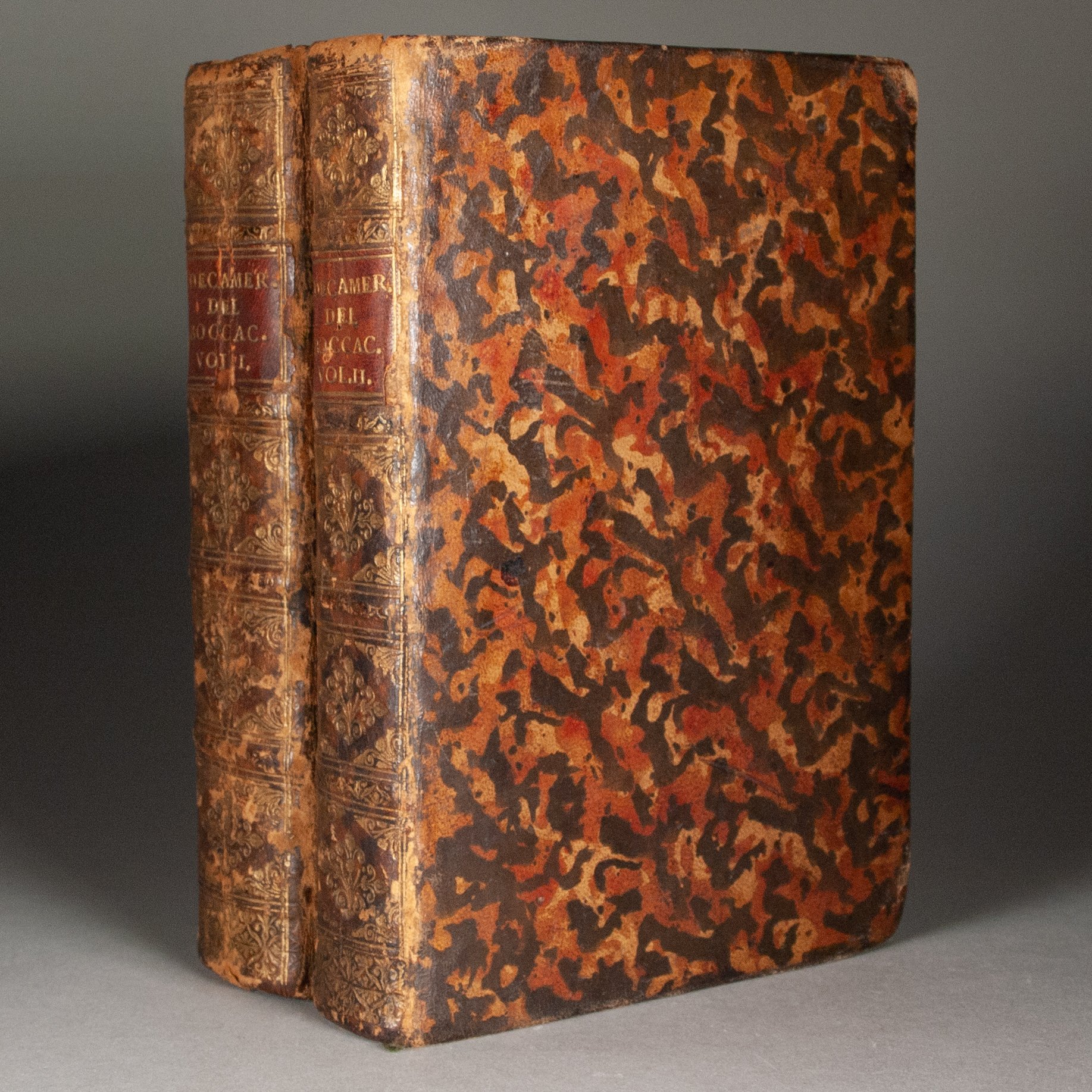

Sponge-painted bindings
Del decamerone di messer Giovanni Boccacci
by Giovanni Boccaccio
Amsterdam [Venice: Antonio Locatelli], 1761
2 vols | v. 1: a^8 A-2O^8 2P^10 | v. 2: A-2H^8 | 8vo | v. 1: XVI, 611, [1] p. | v. 2: 493, [3] p. | 191 x 131 mm
One of two Venice editions that Locatelli issued the same year, with slightly different settings, both with false Amsterdam imprints. Locatelli published an edition in 1718, also under a false Amsterdam imprint, but insists this one "will be improved in paper, type, and in the very arrangement of the lines, clearer; and more pleasing to the eyes of the reader." It is admittedly an attractive edition, with a brief life of the author taken from Boccaccio's contemporary Filippo Villani. ¶ Charming as the edition might be, we confess we bought this set for the bindings. They use a rather arresting mottled pattern, not one we've seen before, and carried on to the edges of the leaves. Most of the shapes (if not all of them) repeat themselves. We suspect our binder accomplished the effect by dabbing the covers with small sponges, as was commonly done, or even with wads of cloth. The largest and most distinctive shape on v. 1 resembles a backwards C. We can imagine the binder, for example, achieving this shape by wrapping a wad of cloth around a fingertip. Underlying these dark stain patterns is a tan leather mottled with a medium brown. The tricolor effect is an impressive one.
PROVENANCE: Gift inscription inked on v. 1 front fly-leaf: "T.M. MacRobert from F.M. June 1951." We expect this is Thomas Murray MacRobert (1920-2008), author of Fine Illustrations in Western European Printed Books (1969).
CONDITION: Contemporary mottled leather, as described above; edges of the leaves similarly mottled with a repeat pattern; spines tooled in gold; marbled paste-downs; green silk ribbon markers. Both title pages are engraved; v. 1 has an engraved frontispiece portrait of the author. First leaf in v. 1 is blank and last leaf in v. 2 is blank. ¶ Leaf 2F1 in v. 1 stained, and R1, S1, T1 in v. 2; 1 cm tear in lower margin of Y4 in v. 2; first few leaves in each volume lightly soiled. Corners bumped and extremities a little worn; spines a bit scuffed, and a crease down the center of v. 1 spine.
REFERENCES: STCN 303950528 ¶ Julia Miller, Books Will Speak Plain (2010), p. 223 ("Stains were created by bookbinders in-house...Mottled stain patterns were delivered to the book by a sponge or brush, and many of the repeat patterns are carefully and exquisitely done. Mottled patterns were popular on trade bindings in the eighteenth century, particularly on French and Spanish bindings, and, to a lesser extent, on English and Irish bindings."), 224 (reproducing a 1753 imprint with a repeating pattern)
Item #596
